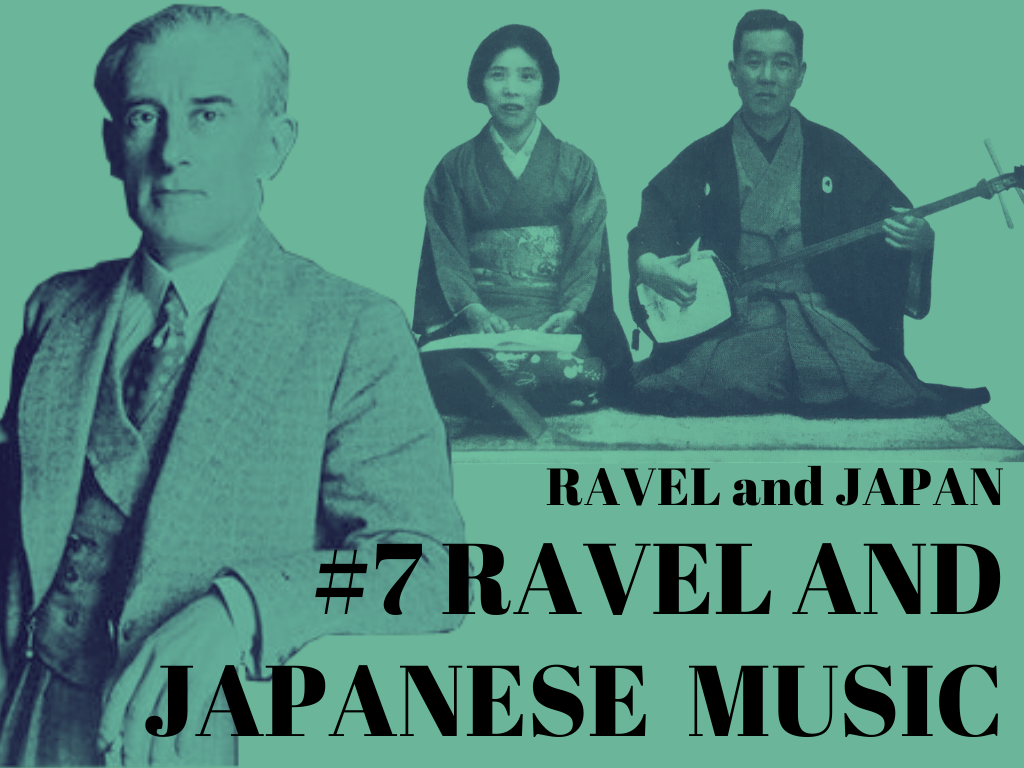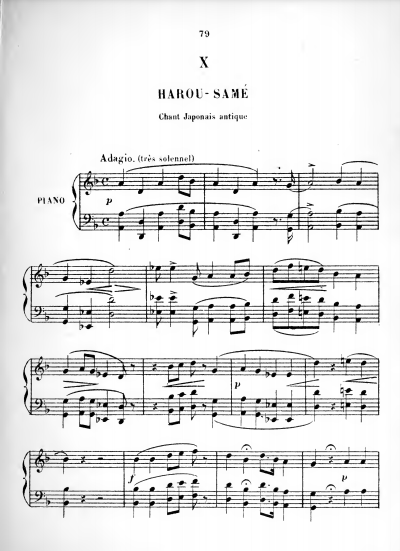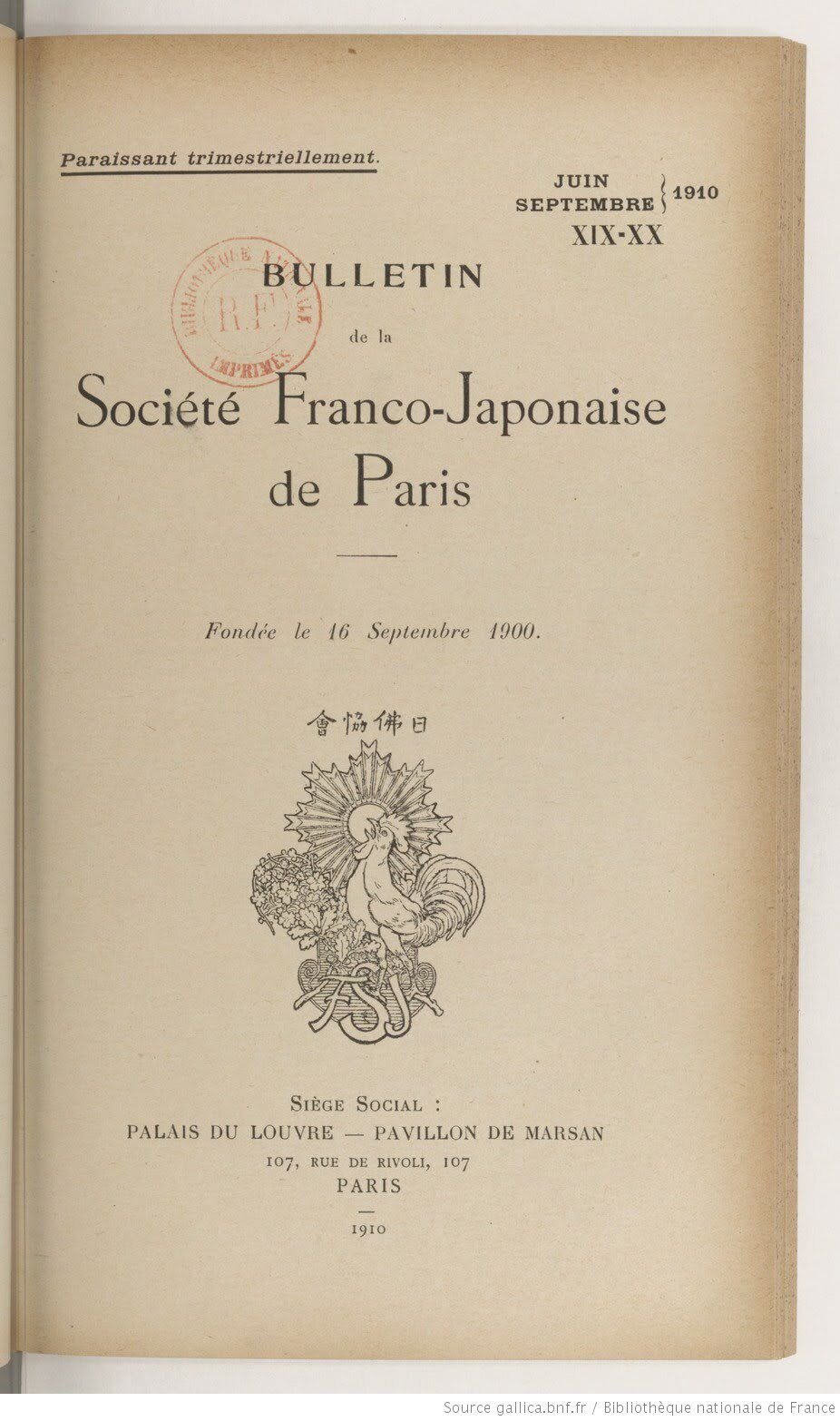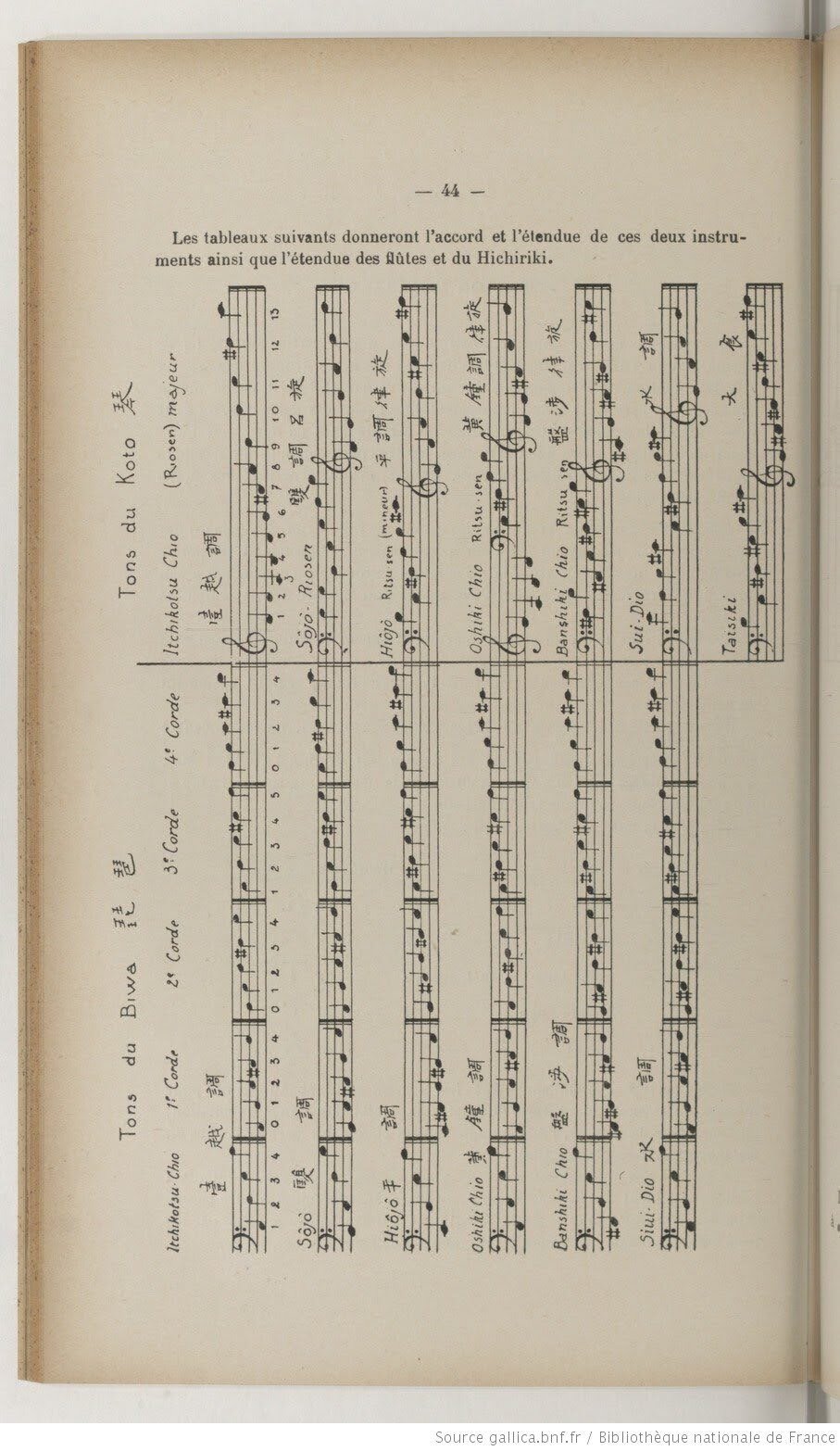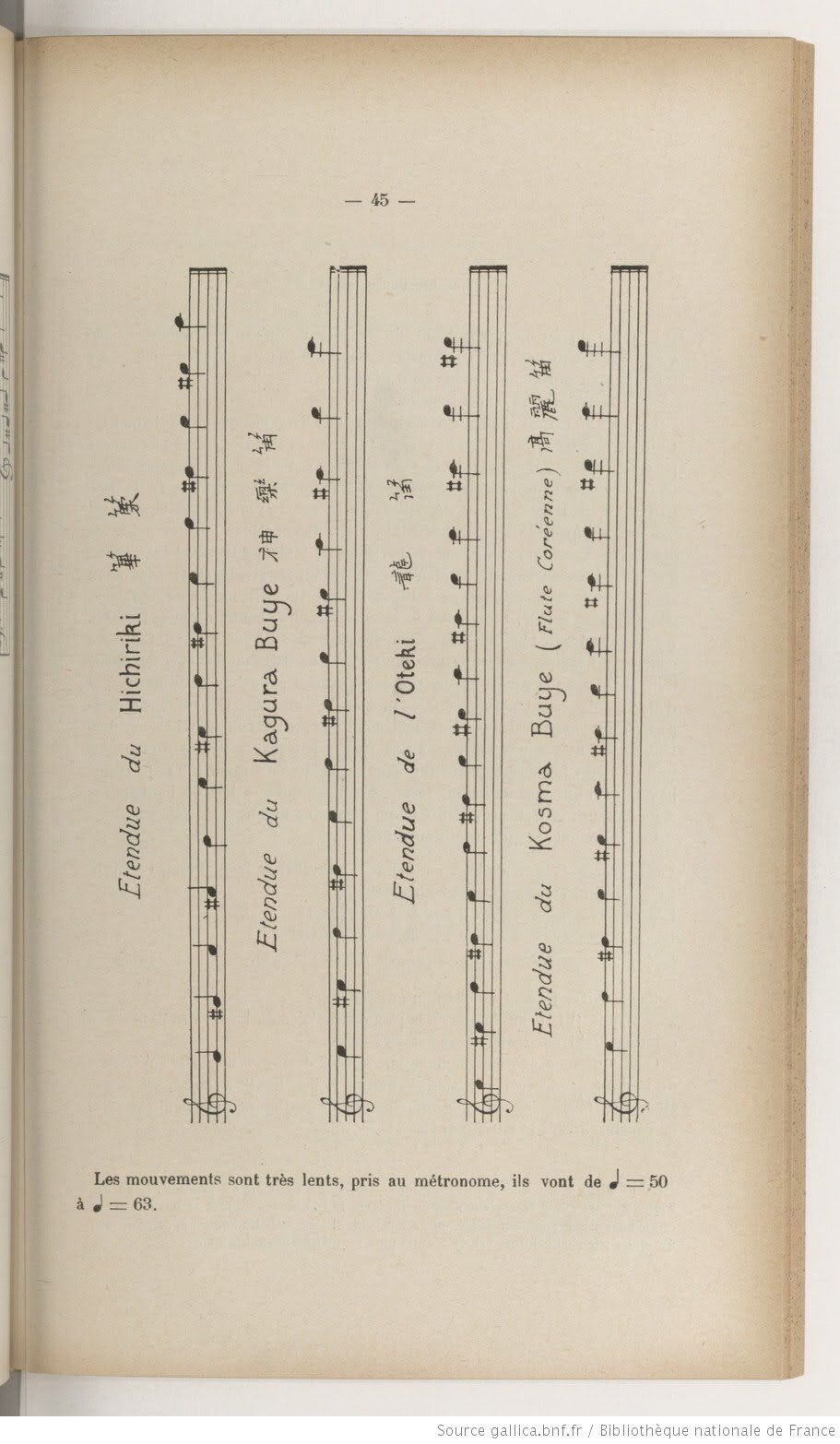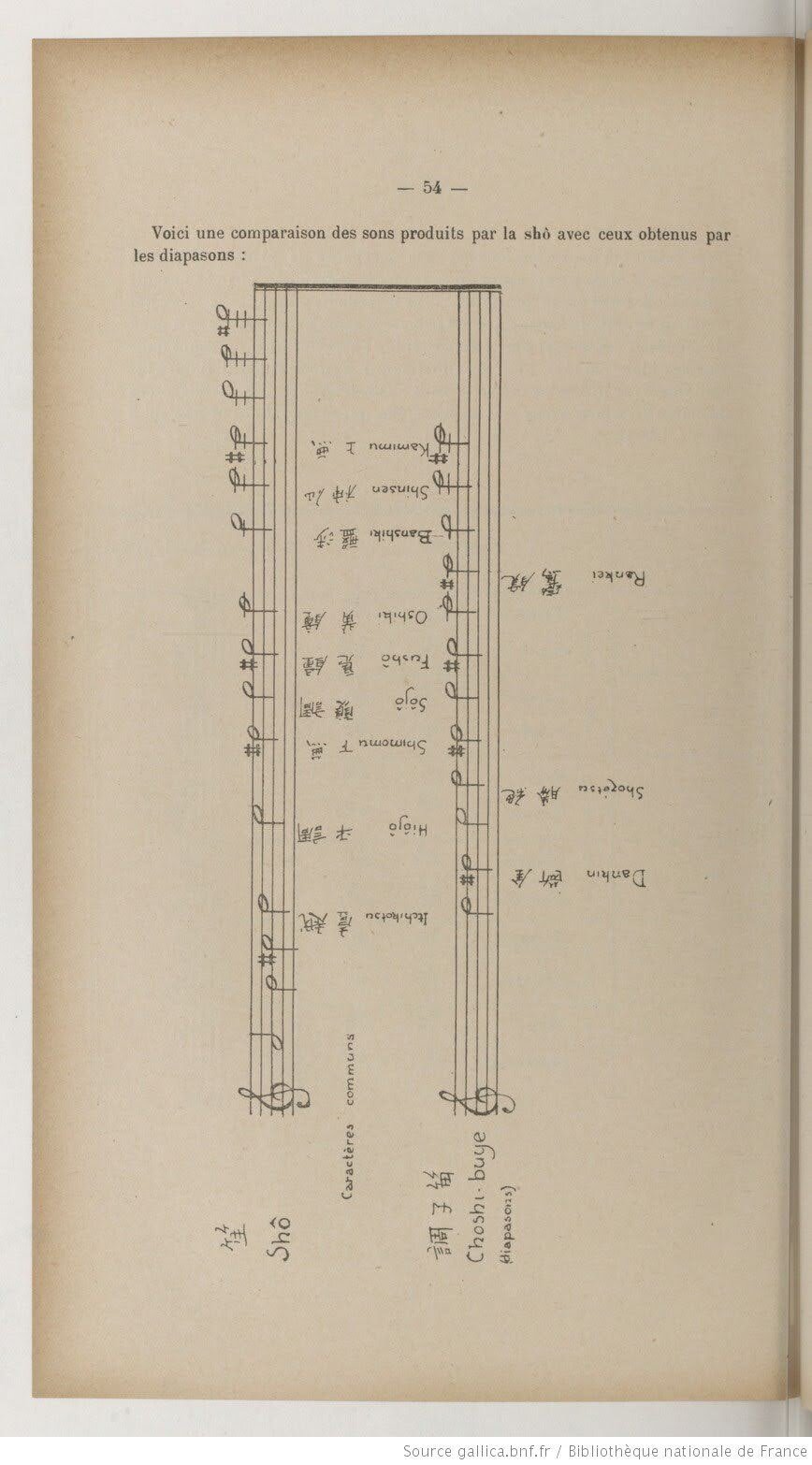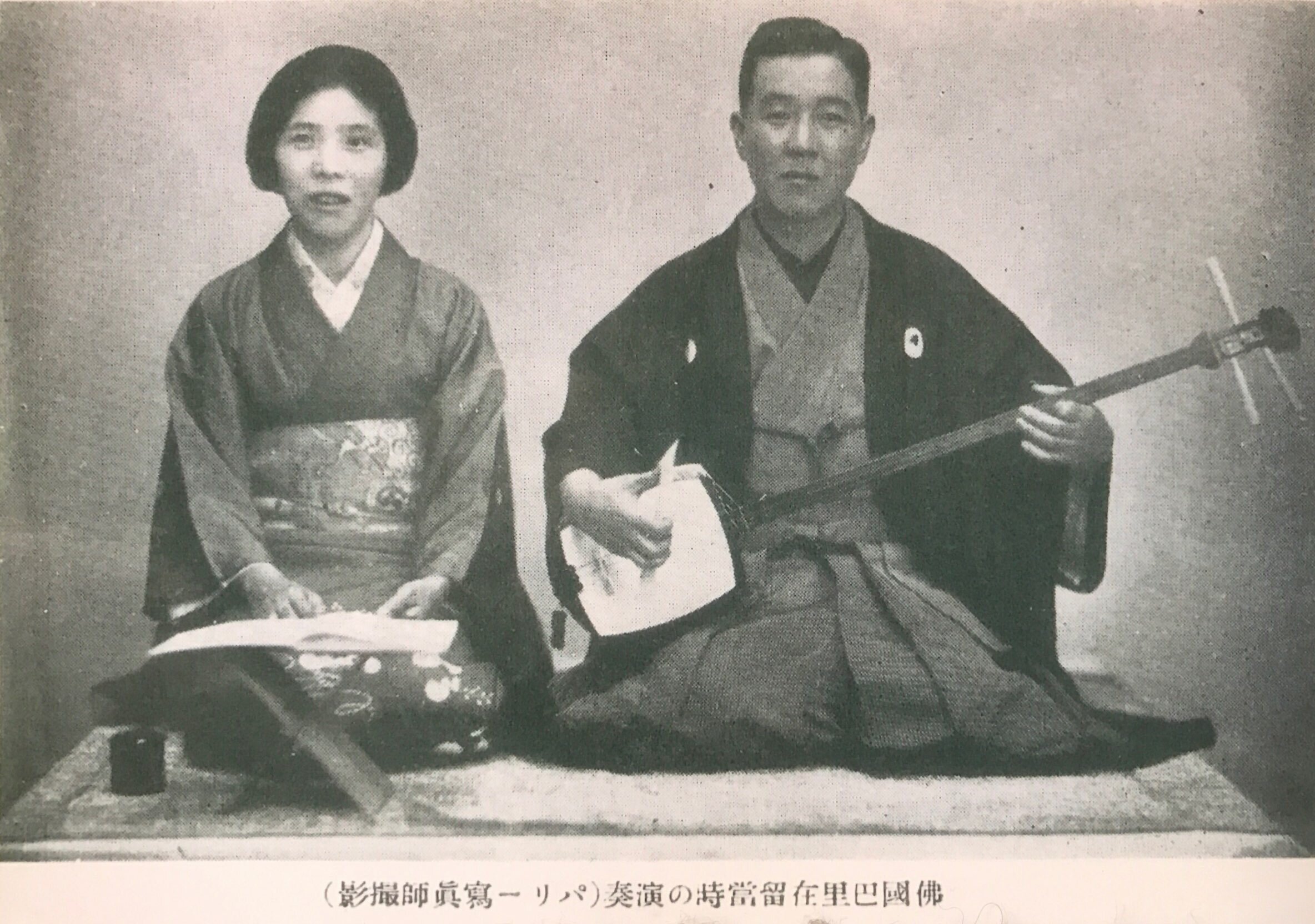M.Ravel and Japan #7 Ravel and Japanese traditional music
In this post, I am talking about Maurice Ravel’s experience with Japanese music. This topic is not often discussed, possibly due to lacking information about Ravel’s experience with it. However, I could find sufficient evidence to be sure about Ravel’s interest in Japanese music and the possibility of its use. I will discuss it chronologically below.
This post has 4 parts:
Ravel at age 14 at the Paris Exhibition in 1889
Ravel’s collection of samples of Japanese music from la Société franco-japonaise de Paris (No. XIX-XX, June-September in 1910)
Ravel and the Japanese Shamisen player Kineya Sakichi the 4th, the exchange concert in Paris
Conclusion and next post
Ravel at age 14 at the Paris Exhibition
The gamelan music from Indonesia at the Paris Exhibition in 1889 famously mesmerized Debussy. But what about Ravel? Was he there as well? According to the book “Ravel'' by Roger Nichols (I read the Japanese translated version, but it is also available in English), 14 years old Ravel visited the Paris Exhibition in 1889 and listened to Russian and Eastern music. I am not exactly sure about what “Eastern music” means, however, other than gamelan music, Japanese old song, Chinese march, Persian song, Ezyptian belly dance and Romanian dance were performed at the exhibition. As we can see from the sheet music published in the same year, titled “Les Musiques Bizzares a l'Exposition”, the old Japanese song might have been “Harou same”.
I, as a Japanese person, recognize the name “Harusame” as spring rain (well, you also call chinese starch noodles Harusame, but I don’t think old Japanese people made a song about it. By the way, there are around 100 words for describing rain in Japanese. You can see that Japanese people’s lives have been close to nature.) Judging from the score, the song itself does not ring a bell with me though.
Perhaps, this song was included in the “Russian and Eastern music” that Ravel listened to at the exhibition. I did not find further information about this, but we could still think that listening to exotic music at an early stage of his life might have contributed to Ravel's characteristic work which typifies orientalism or exoticism in music. And not to mention, at the time Ravel was still a teenager, Japonisme flourished in Paris and the great sensation involved many Parisians and French intellectuals. He lived through this time as a susceptible young boy. I suspect the foundation of Ravel’s curiosity towards the world outside of France was already slowly getting formed in his youth.
2. Ravel’s collection of samples of Japanese music from la Société franco-japonaise de Paris (No. XIX-XX, June-September in 1910)
One of the articles about Japan that Ravel owned includes reports of la Société franco-japonaise de Paris (No. XIX-XX, June-September in 1910). It contains many samples of Japanese classic music by Charls Leroux. This information was given to me by a Twitter account named Amis Ravel Japon (@AmisRavelJapon). The account has a partnership with Les Amis de Maurice Ravel.
The report in June 1910 is available in the digital library in France, Gallica.
Since this is the newest information I have, I did not make a minute investigation yet. I took a casual glance at the pictures and for now, I could only say that the “Sojo Riosen” in the second picture has the same scale as Ravel’s Laideronnette, impératrice des pagodes from Ma Mère l'Oye (C#D#F#G#A#C#), however, the piece is about a Chinese pottery doll. Also, this pentatonic-like scale in general recalls folk songs, so there is no evidence supporting if his composition ever got inspired from these samples. (And we only looked at the report in June. There are still some reports from 1910 that Ravel owned, so those need to be checked as well.) Nevertheless, this is really important evidence that shows Ravel had an interest in Japanese music already in 1910, much before the exchange concert he had around 1925 with the shamisen player Kineya Sakichi the 4th that I am going to talk about now.
3. Ravel and the Japanese shamisen player Kineya Sakichi the 4th, the exchange concert in Paris
As we looked into the stories of Ravel and his Japanese friend Jirohatchi Satsuma previously in my series of Maurice Ravel and Japan #3 M.Ravel’s friend Jirohatchi Satsuma part 1, #4 Three Mysterious Foxtrots and #5 Jirohatchi Satsuma part 2, we realised Satsuma is the key person to understand the connection between Ravel and Japan. In 1925 (or in another article it says 1926), Ravel had a precious opportunity to listen to Japanese traditional music called Nagauta (Nagauta (長唄), literally "long song", is a kind of traditional Japanese music which accompanies the kabuki theater.). This was arranged by Satsuma, at the small salon in Gil-Marchex’s house in Paris. Yes, Gil-marchex is the pianist friend of Ravel and he was also the closest friend of Ravel in the 1920s just like Satsuma (check my article, #4 Three Mysterious Foxtrots as well!).
In the interview with Satsuma published in 1975 by Ongaku-no-tomo-sha, Satsuma recalls the exchange concert:
Interviewer “We talked about the composers Ravel hated, but how about the opposite, what kind of composers did Ravel like?”
Satsuma “Ravel liked Japanese Nagauta. He knew Japanese music very well. When Kineya Sakichi, the shamisen player, came to Paris, Ravel requested me to arrange a concert for him. So I invited Kineya Sakichi to the house of Gil-Marchex, and let Ravel listen to it.
Interviewer “Were you there as well?”
Satsuma “Of course I was there. It was in the small salon of Gil-Marchex. But I don’t remember what was played. Ravel was listening to it eagerly.
I could easily imagine that Ravel actually knew about Japanese music “very well”, probably la Société franco-japonaise de Paris contributed to forming his knowledge of Japanese traditional music already in 1910 (well, if he got the magazine in 1910 and read it in 1910. There is still a possibility that he got it much later than the reports were published.)
Interestingly, a book about Stravinsky gives more details about this concert:
I immediately consulted Ravel and Delage and decided to hold a welcoming party for Sakichi and his wife at the home of the pianist Gil-Marchex. Sakichi performed on a red blanket surrounded by a golden folding screen. Ravel and Delage were enthralled by the performance.
(Confronting Stravinsky, Jann Pasler, 1986, 16.Three Japanese Lyrics and Japonisme by Takashi Funayama)
I found accounts from Satsuma’s side, however, could not find any correspondences from Ravel and Delage’s side so far. Unfortunately I cannot read French at all, so I cannot read the magazine Cahiers Maurice Ravel which publishes unpublished articles of Ravel in French. They might have talked about this exchange concert already in the magazine, but I cannot know it for now. If anyone has read about it before, and the story was from Ravel, not Satsuma, please let me know. I would like to know how Ravel actually thought about the exchange concert.
So, who was the lucky Japanese, Kineya Sakichi, able to see Ravel and perform for him? Kineya Sakichi is a professional name of the Nagauta Shamisen school since the Edo era in Japan, in the 18th century. The name Kineya Sakichi is hereditary. Today, the grandson of Kineya Sakichi the 4th, who met Ravel renamed and became Kineya Sakichi the 7th, the head of the school. I would like to express my gratitude for the 7th again here, for his help to gather the literature about the 4th and Ravel. The picture below is the 4th and his wife in Paris, and the translated extract of “the story of inspection of Europe” by Kineya Sakichi the 4th.
In Paris, there is a person named "Gil-Marchex". He has visited Japan before too. He seems like a great person. He desperately invited us to his house. I was surprised on that day that he was wearing Japanese clothes, the dinner was a Japanese meal, decorations and equipment of the room were also Japanese styles. The famous composer "Ravel" was also at the place. Although he lives 20 miles away from Paris, he still came out of his house for the concert to see the musician who came from Japan. He requested us to perform music, and he was also going to perform by himself, so we (Kineya and his wife) performed "Azumahakkei" and "Chou" there. Ravel performed his own piece "Oiseaux tristes", and Gil-Marchex performed "La fille aux cheveux de lin" and "La danse de Puck". After I came back to Japan and told this story to somebody who knows European music well, that person was very happy and told me that I did something great, because "Ravel" is an honorable person in France.
Kineya Sakichi the 4th and his wife also visited other countries in Europe to learn about European culture and introduce Shamisen music to Europeans. This was organized by the Ministry of Culture of Japan. The stories of his experience was written in “歐洲視察談 報告會に於いて 杵屋佐吉” (The story of inspection in Europe, at the briefing session, Kineya Sakichi) and Kineya Sakichi the 7th was so kind to share me the copy of the article.
Interestingly, Ravel chose to play his own composition Oiseaux tristes, and Gil-Marchex played La fille aux cheveux de lin and La danse de Puck, which are from Debussy’s Prelude book 1.
Kineya Sakichi the 4th performed Azumahakkei (eight views from Azuma) and Chou (butterfly). The lyrics of Azumahakkei describe famous places in Edo with the beautiful Japanese four seasons.
Unfortunately, I could not find a recording of Chou on YouTube. According to the Twitter-account of the son of Kineya Sakichi the 7th, Kineya Saki the 3rd, it was composed by Kineya Sakichi the 4th but without singing part (so written only for Shamisen) so Kineya Sakichi the 4th probably performed it as a solo piece.
Ravel was already 50 years old when he had the exchange concert with Kineya Sakichi the 4th. The concert was held 12 years before his death, and he had already moved to Le Belvédère which was described “20 miles away from Paris” in the story of Kineya. I talked about the Japanese paintings Ravel owned in Le Belvédère in my last post #6 Ukiyoe (with new information) - Maurice Ravel’s collection, so you might want to check this one too.
How much did the experience of listening to Japanese traditional music influence Ravel’s composition? I made a list of music Ravel composed after the exchange concert until his death.
Violin Sonata no.2 (1923-27)
Chansons madacasses (1925-26)
Rêves (1927)
Fanfare pour L’Éventail de Jeanne (1927)
Bolero (1928)
Le Concerto pour la main gauche en ré majeur (1929-30)
Le Concerto en sol majeur (1929-31)
Don Quichotte à Dulcinée (1932-33)
The sketch of Morgiane, oratorio-ballet (1932)
Honestly I don’t find much about Japan in these compositions at a glance at all. The two piano concertos are influenced by Jazz, especially considering the fact that Ravel visited the U.S. in 1928. Bolero has a Spanish taste, and the exoticism was well expressed in Chansons madacasses. There is no Japan we can see on the surface.
Even if Ravel was inspired by listening to live performances of Japanese traditional music at the exchange concert, we can never know how much of the spirit Ravel tried to imply in his music. There is always a possibility of Ravel not getting that much into it after all. Speaking of the late years of Ravel, he was already diagnosed with osteomalacia and renal failure before the trip to America in 1928. In 1933 he had a memory and speech defect and it was almost impossible for him to communicate with people. Obviously, he did not have enough physical freedom to compose however he liked, especially in the 30s. But if we believe in Satsuma’s words, “Ravel liked Japanese Nagauta. He knew Japanese music very well”, and Ravel was “enthralled by the performance”, Ravel might have dreamt to visit Japan where his close friend Satsuma is from, where his other close friend Gil-Marchex visited and performed Ravel’s music, and where many of the paintings he owned came from.
4. Conclusion and next post
I would not like to say clearly that any of Ravel’s music was influenced by Japanese art unless I find crucial evidence. Since this is my policy in this research, I am extra careful to make the conclusion for this post as well - at this moment, I cannot be sure about the influence of Japan in Ravel’s music yet. However, the samples of Japanese traditional music in the report he owned are a very exciting fact and need to be investigated deeper. Also, as you can see from the YouTube video of shamisen, it seems impossible to apply the essence of Japanese traditional music into Western music. It is so radically and immovably different. Although I showed you some interesting facts in this post, I believe there are more facts still not revealed yet. As soon as I discover new information, I will discuss it in my blog.
In the next blog in this series, I will focus on the composer friends of Ravel such as D.E.Inghelbrecht, I.Stravinsky and M.Delage. From the relationship with his composer friends, we will see what they were interested in, and what Ravel thought of Japanese art.







